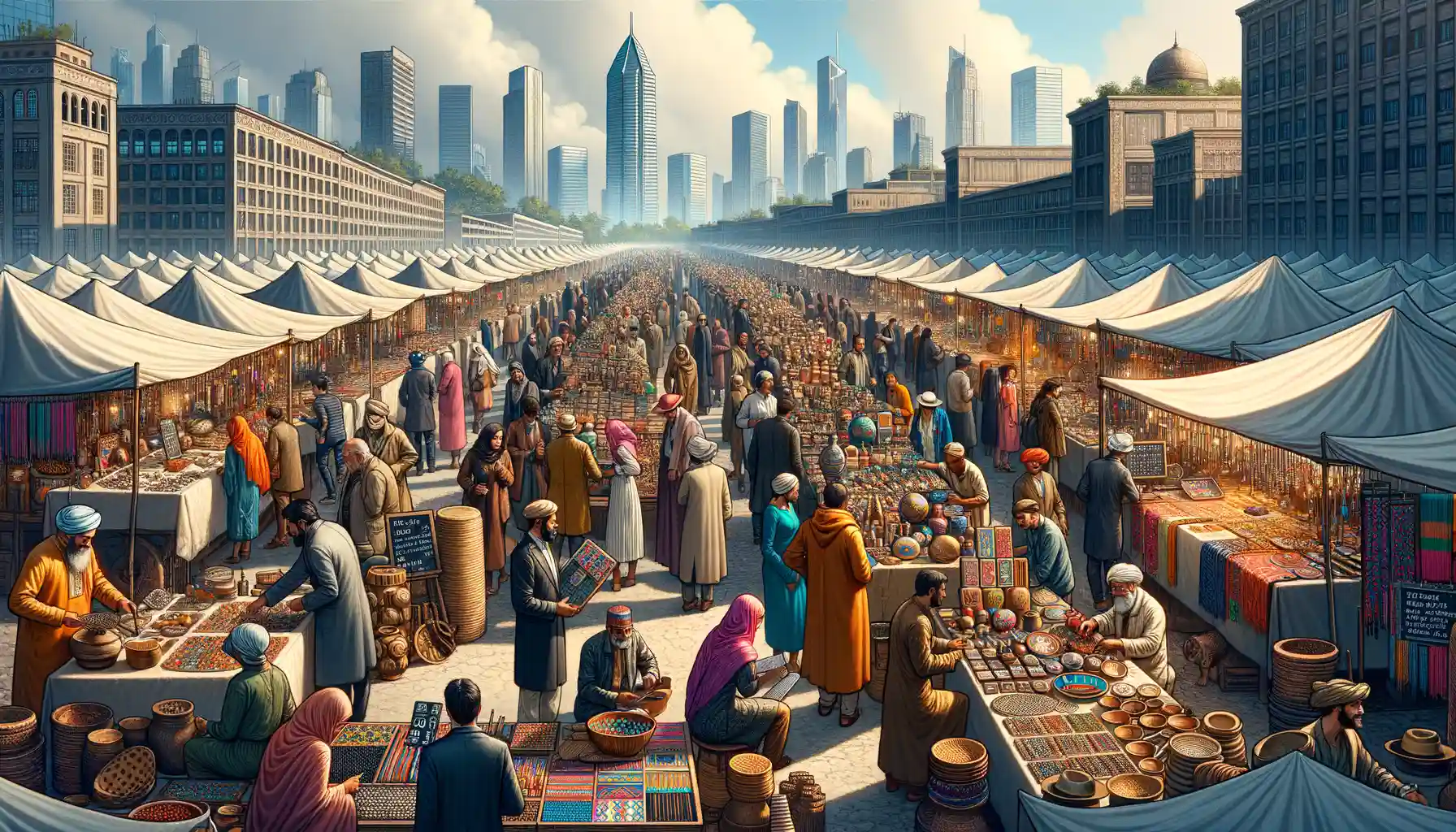Introduction to Artisan Markets and Their Appeal
The Irresistible Charm of Artisan Markets
Step into an artisan market and it’s like wandering into a living storybook. The hum of conversations, the aroma of fresh-baked bread or exotic spices, and the kaleidoscope of handcrafted treasures pull you in like a magnet. These markets aren’t just places to shop—they’re spaces where cultures collide, where history spills into the present, and where creativity thrives in every booth.
What makes them so charming? It’s the human touch. When you buy a hand-thrown ceramic mug, you’re not just grabbing a random cup; you’re holding the maker’s late-night struggles, their experiments with clay, their tenth failed glaze (and triumphant eleventh). Artisan markets embody authenticity in a way chain stores simply can’t replicate.
- Imagine chatting with a leatherworker about centuries-old stitching techniques.
- Or tasting honey infused with lavender from someone who also tends the bees.
- You might even stumble upon quirky treasures, like soap shaped like tiny succulents!
Why We’re Drawn to Authenticity
In a world dominated by mass production, there’s something almost magical about owning something truly unique. Artisan markets give us just that—a connection to the hands, hearts, and stories behind each piece. Whether it’s a handwoven scarf or a painting crafted on reclaimed wood, every item pulses with a quiet individuality that whispers: “I’m one of a kind.”
These markets strip away the artificial and remind us why the handmade matters.
Exploring Unique Crafts and Goods Found at Artisan Markets

Where Creativity Knows No Bounds
Wandering through the enchanting aisles of an artisan market feels like stepping into a living, breathing gallery where every stall tells a story. These one-of-a-kind markets are havens for those who crave more than factory-made products—they’re treasure troves brimming with heart and history. From meticulously hand-embroidered textiles to gleaming pottery shaped by skilled hands, you’ll find items that are as unique as fingerprints.
Imagine running your fingers across the intricate carvings of a wooden figurine, hearing the artisan excitedly share how they source their materials sustainably from fallen trees. Or sipping tea from a custom mug that still smells faintly of the kiln it was fired in last week—it’s this undeniably human touch that makes these crafts extraordinary.
- A celestial ring shaped from hammered silver, glinting under the sunlight.
- Hand-poured soy candles, each carrying a scent inspired by local botanicals.
- Vividly patterned rugs woven on ancient looms, blending tradition with a vibrant edge.
Let’s not forget the unexpected gems: maybe a quirky notebook bound with recycled paper or a watercolor painting that perfectly captures the soul of the town you’re visiting. Discovering these goods is like building a bridge between your world and the artisan’s—it’s intimate, personal, and truly unforgettable.
The Joy of Meeting the Makers
What sets artisan markets apart isn’t just the goods, but the people behind them. Chatting with artisans often reveals surprising layers of connection. You’ll meet the leatherworker who learned her craft from her grandfather, the weaver whose designs mirror the constellations above their home, or the glassblower who turns molten chaos into delicate beauty.
It’s not just shopping—it’s forging connections. You walk away not only with a physical item but with a story that echoes in your heart every time you use it.
Top Artisan Markets Around the World

Wander Through Storied Alleys and Vibrant Stalls
Step into the heartbeat of culture in the world’s most enchanting artisan markets. From a maze of cobblestoned streets to sprawling outdoor plazas, these marketplaces aren’t just places to shop—they’re living, breathing tapestries of tradition. Picture this: the smell of leather and spices in Marrakech’s Jemaa el-Fnaa, where artisans have handcrafted goods the same way for generations, or the harmonious clinking of silver jewelry stalls in Mexico City’s La Ciudadela—a true feast for the senses!
Some artisan markets feel almost dreamlike:
- Otavalo Market, Ecuador – Set high in the Andes, this is where alpaca wool scarves meet intricate handwoven tapestries.
- Masai Market, Kenya – Vibrantly colored beadwork and tribal carvings radiate centuries of cultural pride.
- The buzzing Chatuchak Market, Thailand – Overwhelming? Maybe—but oh, what treasures await! Hand-painted ceramics and silk scarves galore.
Hidden Gems That Steal Your Heart
And then there are the surprises—the markets you stumble upon by accident, like St. Ouen Flea Market in Paris where vintage meets quirky or Japan’s serene Miyagawa Morning Market, offering hand-carved wooden dolls alongside fresh mountain apples.
It’s not just products you bring home; it’s their story. That ceramic mug isn’t just a mug—it’s the soul of a potter who spent hours perfecting every curve. It’s authenticity, beauty, and connection etched into every stitch and stroke.
Tips for Shopping and Supporting Local Artisans

Finding Hidden Gems and Telling Their Stories
Shopping at artisan markets isn’t just about buying things—it’s about building connections and celebrating creativity. When you pick up a handmade ceramic bowl or a handwoven scarf, you’re holding someone’s story in your hands. Here’s how to make the most of your experience and support these talented artisans:
- Ask questions! Artisans often love to share their process or inspiration. “What inspired this design?” or “How did you learn this craft?” can open up wonderful conversations.
- Look beyond what catches your eye first. That unassuming table tucked in the corner might hold the one-of-a-kind treasure you didn’t even know you needed.
- Respect the price—a piece of handmade jewelry or a carved wooden sculpture represents hours of work, not assembly-line production.
More Than Just Shopping: Championing Creativity
Supporting local artisans means more than walking away with a unique item—it’s about weaving yourself into a community. Share your finds on social media and tag the artist; that small action helps spread their work to new admirers. And if you genuinely love their style? Consider commissioning a custom piece. Imagine owning something made just for you, with your style and soul stitched into it!
Lastly, don’t underestimate the power of simply saying “thank you”. Your genuine appreciation fuels their passion—after all, every creator thrives on knowing their work is loved.
The Cultural and Economic Importance of Artisan Markets

The Heartbeat of Communities and Their Traditions
Artisan markets are more than collections of stalls—they are vibrant, open-air galleries where culture comes alive. Each handcrafted item tells a story, often reflecting traditions passed down through generations. Picture a wool blanket intricately handwoven in Peru or delicate lace crafted in Bruges. These aren’t just products; they’re pieces of heritage imbued with meaning.
Walking through an artisan market is like stepping into the soul of a community. You hear the hum of conversations, see the sparkle of pride in a craftsperson’s eyes, and taste the local flavor in handmade foods. These markets preserve cultural roots while giving them space to evolve. Without a doubt, they act as keepers of tradition in a fast-moving modern world.
Fueling Local Economies, One Purchase at a Time
Artisan markets don’t just nurture culture—they fuel livelihoods. When you buy a piece, you aren’t just taking home something beautiful. You’re directly supporting artisans and their families. Here’s the impact laid bare:
- Empowerment: Many artisans rely solely on these markets for income, especially in underserved communities.
- Job creation: Beyond the makers, markets employ transporters, suppliers, and market organizers.
- Fair trade & bypassing middlemen: By buying directly, you ensure fairer earnings for creators.
So, the next time you visit an artisan market, remember—your purchase weaves its way into sustaining cultures and livelihoods with every thread and bead.
